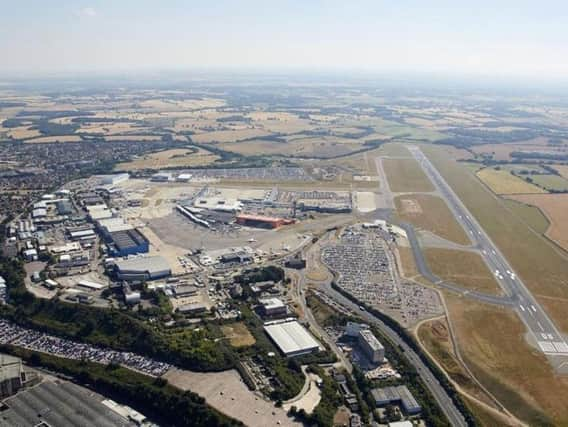Luton Airport expansion: Plans to increase capacity to 19m passengers a year approved


Plans to increase the passenger capacity at London Luton Airport and adjust noise contours have been approved, after being called in by two government ministers.
Applicant London Luton Airport Operations Limited (LLAOL) had its proposals agreed by Luton Borough Council’s development management committee initially.
Advertisement
Advertisement
But both the Secretary of State for Levelling Up, Housing and Communities and the Secretary of State for Transport agreed a local inquiry should be held to review “all the relevant aspects of the project”.
LLAOL applied to increase the airport’s passenger capacity from 18m to 19m a year, and to amend the day and night noise contours.
The panel of inspectors considered several issues, including how the plans meet the challenge of climate change, noise impact on health, air quality, sustainable transport and socio-economic implications.
The proposal would result in more flights, concluded the three planning inspectors Richard Clegg, Sheila Holden and Geoff Underwood. They approved the application, subject to conditions.
Advertisement
Advertisement
“These and the associated increase in activity, as well as journeys by staff and passengers to and from the airport, would consequently have the potential to increase greenhouse gas emissions,” they said in their findings.
“But in pursuance of wider sustainability objectives across the airport, the applicant would be committed to implementing a sustainability strategy covering supply chains, energy efficiency, waste and water management, and biodiversity.
“For the same reason, obligations provide a commitment to the submission and implementation of a carbon reduction strategy, and establish arrangements for the management of grassland and hedgerows at Wigmore Valley Park.
“These measures are important to minimise the environmental impact of greater use of Luton Airport.”
Advertisement
Advertisement
LLAOL received permission in 2013 to expand capacity to 18m passengers a year over a 15-year period to 2028, but reached 19m by 2019.
Their report reaffirmed full planning permission for the dualling of the Airport Way approach road and associated junction improvements, extensions and alterations to the terminal buildings, as well as a new departures and arrivals pier and walkway.
Other earlier improvements included a pedestrian link building from the short-term car park to the terminal, extensions and alterations to the mid-term and long-term car parks, building a new parallel taxiway and extensions to aircraft parking aprons.
The scope of the development “doesn’t prevent the submission of further applications involving limited levels of growth”, added the panel’s report.
Advertisement
Advertisement
“That said, each proposal must be considered on its own merits, and a decision on one planning application doesn’t pre-determine the outcome of future planning applications.
“In the case of Luton Airport, it’s known that a development consent order (DCO) application for major expansion is being pursued, a proposal which can’t be construed as incremental growth.
“Concerns about incremental growth don’t count against the application.”
Having taken into account the applicant’s environmental statement and the inspectorate’s recommendations both Secretaries of State agree with the panel’s conclusions to grant planning permission, said a statement on the government website.
Advertisement
Advertisement
Alberto Martin, chief executive of London Luton Airport (LLA), said: “We are delighted that the two Secretaries of State have reached their long-awaited decision, which now ensures London Luton Airport is well positioned to secure its economic future and continue to deliver for our passengers and our local communities.
"LLA is a vital economic driver for the area and the growth of the airport is directly linked to the growth of the local economy. We are excited that this positive decision on our plan for responsible and sustainable growth will provide the platform for the airport’s future success, creating significant employment and economic benefits to the local region.
"This plan is consistent with our commitment to achieve carbon neutrality for our own operations by 2026 and to achieve net zero emissions by 2040."